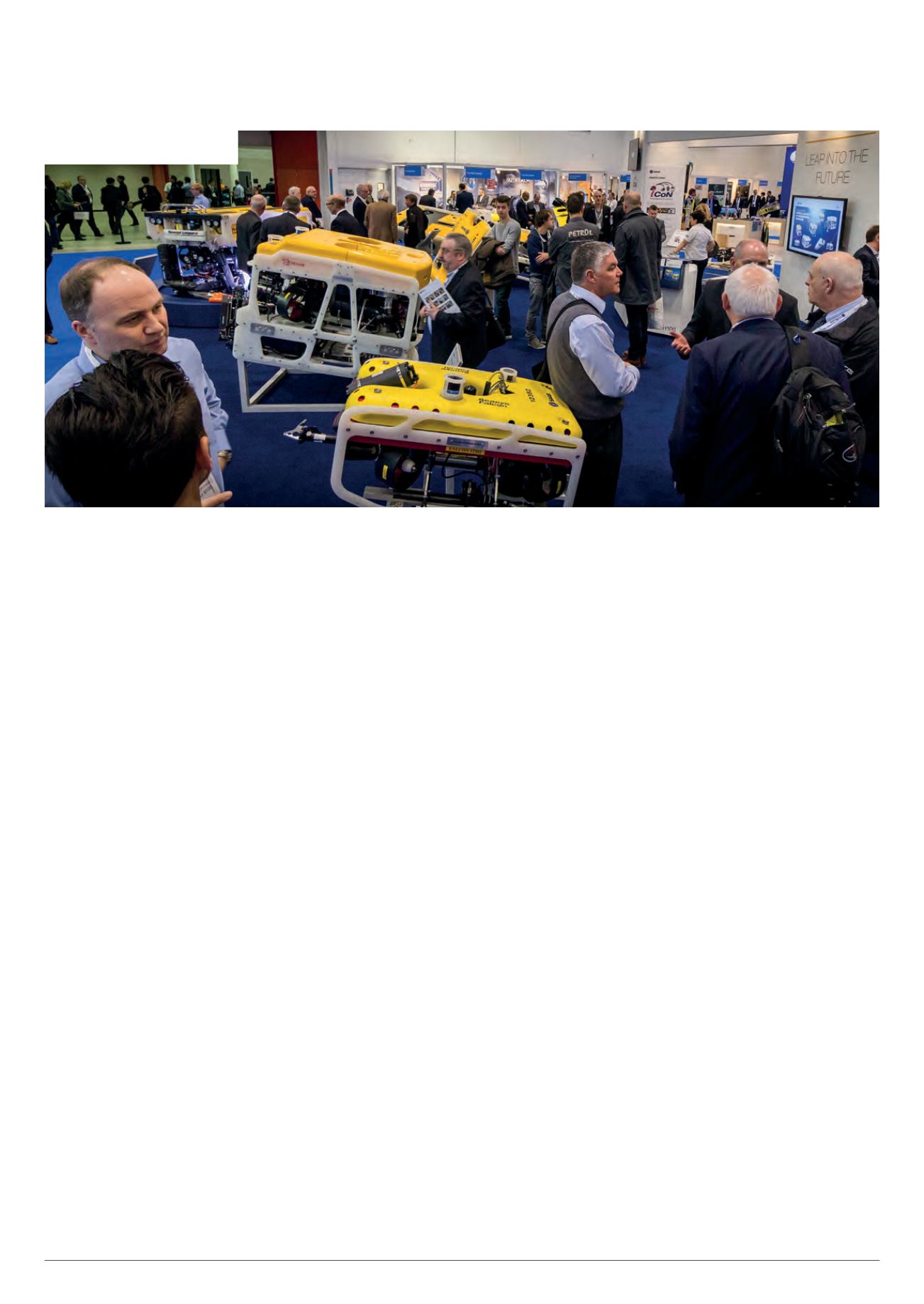

86
R
enowned as the leading
global exhibition for the
marine science and
technology community,
Oceanology International
2016 attracted nearly 8000 visitors from
79 countries. Held at the ExCeL centre
in London, a vast array of unmanned
maritime vehicle and component
manufacturers unveiled their latest
innovations and accomplishments.
Hydroid launched the upgraded
Remus 100 AUV. Its torpedo-shaped,
man-portable hull has been redesigned
with an elliptical nose, reducing drag
by 20%, and is acoustically transparent
in order to house the acoustic
communications transducer.
Drag is further reduced with a
conformal phased array transducer
300 kHz Doppler velocity log (DVL) in
the rear. In addition, the inertial
navigation system (INS) has been
relocated between the DVL and the tail.
New power systems are also featured.
“There’s one-and-a-half times more
energy in this vehicle than in the
previous generation,” Hydroid’s Duane
Fotheringham told us. “We used the latest
18650 3.2 Ah lithium-ion battery cells.”
Also, the motherboard, CPU stack,
emergency board and six serial cards
have all been replaced with a new core
electronics board, which is smaller and
lighter than the sum of the replaced
parts and consumes only 5 W – 25%
of the power of the old layout – by
using an FPGA, ARM-based processing
architecture.
These improvements contribute
to a 12-hour endurance at 1.5 m/s
(depending on sensor configuration,
operating environment and mission
profile), with 1.5 kWh total energy storage
and a maximum range of 72 km.
Gabri subsidiary SeaStick debuted
AUVino, a DIY kit to build a lightweight
AUV without the expense of a
prefabricated system.
To build it, developers will need
a programmable microcomputer
(suggestions include Arduino, Genuino
or Raspberry Pi) for experimental
enhancements, primary or rechargeable
24 V, 10-20 Ah batteries and a 3D printer
for the internal chassis, nose and tail
sections. Also recommended are model
aircraft PWM servo motors, an XBox
One control pad for ROV mode, and a
Raspberry Pi camera module.
The kit itself consists of the hull, hull
penetrators, transparent nose cone,
motor driveshafts, magnetic induction
brushless motors, the motor driver PCB
and the main electronics for all the
onboard systems. The software and
drawings for the 3D-printed parts are
also available.
Rory Jackson
presents highlights from this
foremost show for developers in the maritime sector
Sea
changes
June/July 2016 |
Unmanned Systems Technology
This year’s show attracted
thousands of international visitors









